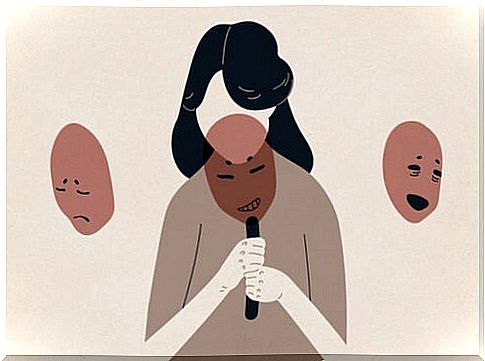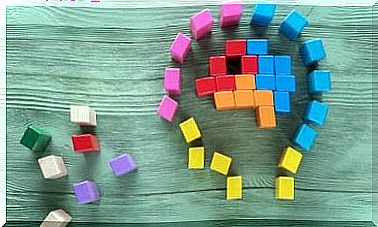Therapeutic Techniques Taken From Psychodrama

Psychodrama is a therapeutically derived technique, a set of techniques that focuses on staging / dramatizing reality from a given point of view. It seeks to encourage the expression of repressed, repressed, or misunderstood emotions in order to promote catharsis and behavior change. In this article, we look at seven different techniques taken from psychodrama.
The elements to work with can be about memories as well as current and future events. Thus, it is useful for all types of disorders ranging from depression to those included in the anxiety-suppressing spectrum (such as OCD), eating disorders and emotional management problems.

What is the purpose of these techniques taken from psychodrama?
Psychodrama has several goals, including:
- To achieve a real and deeper understanding of a particular situation. You can apply it to situations you experienced a long time ago. Those whose wounds have not healed and also on troublesome situations that create anxiety in the future. The techniques that stem from psychodrama can help you get in touch with the emotions you have experienced. Also with all the emotions that come from them. It means getting in touch with them and with ideas and thoughts that may not usually have a place in your routine.
- Understand points of view that are different from your own. Many techniques derived from psychodrama allow you to see the other person’s position when it comes to a conflict – past or future. This is because considering other perspectives and participating in other discourses can help you develop empathy and understand the motivation for certain actions.
- Skill training. Some of these techniques allow you to take on roles that you may not know how to handle. They can serve as training to experience other attitudes, behaviors and even personality aspects.
Psychodrama rules
The goal of the techniques derived from psychodrama is that the subject, or the main character as it is commonly referred to in this field, should not describe his conflicts verbally. It differs from the usual way in which people share, manage and think about their problems. The goal is to be more authentic and in-depth.
Psychodramas usually require a group of performers as well as an audience, which acts as an affective sounding board in the performance. However, all designs can be made with fewer people. Monologues are actually an option.
In a performance with several participants, for example, the representation of a partner can contribute to an understanding of how other people act. Thus, the main character acts according to their feelings and criteria, according to their subjective reality.
Psychodrama is also suitable for many types of people, including shy or withdrawn individuals. The main character can be reserved and unnatural. It’s okay as long as no one is forcing the person to do anything.
Change in psychodrama
What is really interesting about the techniques that stem from psychodrama is that one can achieve insight, awareness and understanding through the dramatization itself.
Neither the presence of a therapist nor the verbalizations he elaborates are necessary. Thus, one can reach this insight spontaneously from the execution without the need for external advice.
Techniques taken from psychodrama
Make the internal dialogue clear
The Soliloquy technique means that the characters must express what they think and feel before they encounter a given situation. This situation can worry them in the present by making the future uncertain or because it has worried them in the past. This can be useful when you get a call from your boss or when you feel afraid of being abandoned during a discussion.
In the same way, the Aside technology is useful for getting in touch with what one thinks and feels before a certain event that is not usually manifested. You try to express out loud what you keep quiet about out of fear or embarrassment by using this technique during a dialogue, confrontation or discussion. It is like a parenthesis that allows a person to get in touch with their reality.
Reversal of roles
This technique consists of representing a specific situation you are immersed in. It can be a conversation with a friend or a job meeting.
The idea is that the main character should play the role of the other party, the person he or she has discussed with or who has caused him or her problems. The main character must understand the situation from the other perspective and thus be able to generate other types of emotions to understand what made the other person act as he did.
The main character and the helper
Some of these techniques require the presence of an auxiliary ego. This ego wants to make room for the forgotten aspects of the interactions. This is because they often contain valuable information.
Hjälpegot is behind the main character in the duplication technique and verbalizes problems that are not expressed by the protagonist, as an extension of the discourse. This one does it while the latter speaks.
Non-explicit problems are usually threatening, whether it is painful or semi-conscious. The ego returns foreign parts of itself to the main character. It takes him to more disguised levels by manifesting problems that he considers relevant.
There is also an auxiliary ego in the mirroring technique, but that does not speak here. It mainly stands in front of the main character and imitates his non-verbal behavior while a situation is dramatized. This includes gestures, postures, tics and facial expressions.
The elements that are usually considered relevant are the verbal ones that a person expresses. But non-verbal behavior is also important and can be much more informative than the message itself.
Changed reality
Psychodrama-derived techniques, such as an extra reality, give the main character a different experience of something that happened. This reality tries to nullify the events as they happened. This so that the protagonist can experience them differently.
Experiencing situations that have already occurred in the way one would like to experience them can help to understand the pain in certain situations. In addition, it can help the person to have another symbolic reality that can deepen that pain, while at the same time it can heal.
A situation that the person is afraid to go through as himself can be met through the technology that consists of the substitute role. This is similar to changing roles. It could be a childhood memory, a session with his project manager or the loss of a partner, among others.
Concluding remarks about techniques taken from psychodrama
The purpose of this exercise is not for a person to put himself in someone else’s seat, but to put himself in another seat. The point is that the main character should look at a given situation without the emotional charge that stems from his role off stage.
It can be about experiencing a childhood memory like anyone else: a brother, sister, cousin or neighbor. Or to dramatize the loss of a partner as a spectator, a friend who sees everything. It can help the person to emotionally separate from the situation and look at it differently and calmer to think, understand and integrate.
Dramatization is therefore a good resource for achieving catharsis and behavior change through understanding one’s own emotions. It is not only useful for moving forward in the relief of psychological disorders, but also extremely helpful for those who want to rediscover themselves, unload emotionally and get in touch with their feelings, sensations and thoughts that they once held in the shadows.









